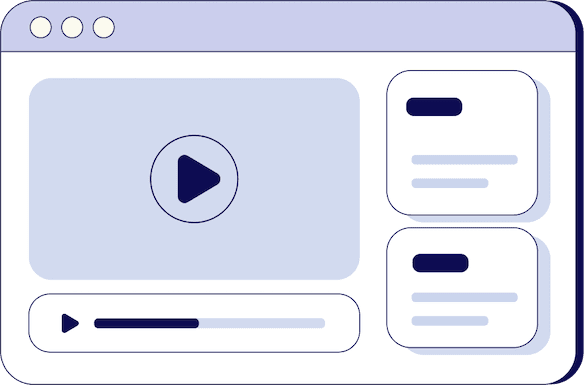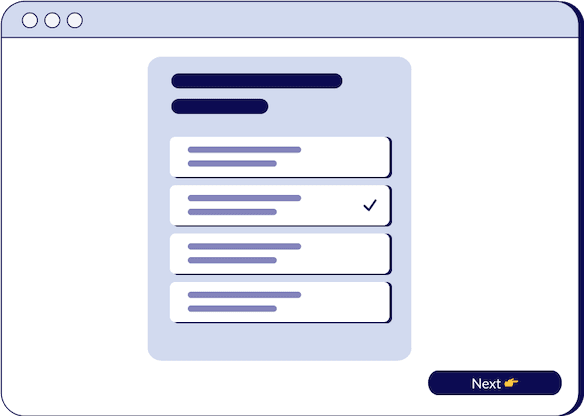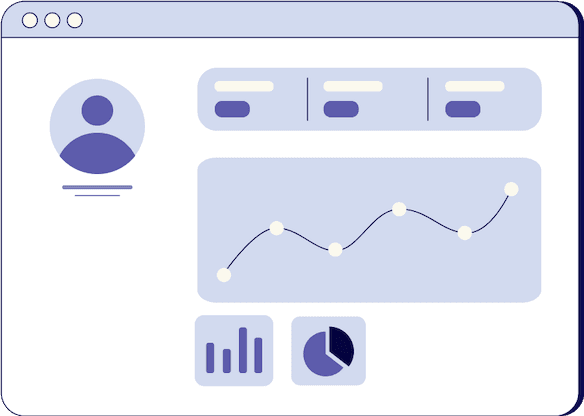
6 Powerful Sales Presentation Tips
Will Barron
Managing Director at Salesman.org

- duration
- 14 min
- Average Score
- 82%
- Stars
- 5
Are you ready to turn your next big sales opportunity into a successful deal with an engaging, tailor-made sales presentation? Research shows that customized presentations significantly increase the chances of closing a sale. This session will guide you through a six-step sales presentation framework designed to refine your approach and help you connect more effectively with your prospects.
Step One: In-Depth Research for a Customized Approach
The first and perhaps most critical step in this framework is extensive research. Understanding not only what your prospect's company does but also diving into their history, values, culture, and any challenges they are currently facing is crucial. This session emphasizes the importance of using resources like annual reports, company websites, and market data to build a comprehensive understanding of your prospect. This knowledge will enable you to tailor your presentation, making it relevant and impactful.
After thorough research, the next step is to align your presentation with the specific challenges and needs of your buyer. It's common for sales presentations to focus heavily on the product's features. However, what truly resonates with prospects is seeing a solution to their unique problems. This part of the session will show you how to shift the focus of your presentation from your product to the buyer's pain points, thereby creating a more compelling and relevant pitch.
Understanding Your Audience
Knowing your audience is key to a successful sales presentation. Are you presenting to decision-makers or intermediaries like gatekeepers or middle management? Your approach should differ based on your audience. This session provides strategies for customizing your presentation based on who you are addressing, whether it involves focusing on high-level metrics for executives or providing detailed product information and case studies for those who will relay the information to decision-makers.
By starting with a foundation of thorough research and focusing your presentation on the specific challenges and audience, you set the stage for a more effective and impactful sales pitch. This session will equip you with the tools and insights needed to create a presentation that not only showcases your product but also clearly addresses your prospect's unique needs and concerns. Watch this session to learn how to elevate your sales presentations and increase your chances of closing that big deal.
Moving beyond the initial research phase, the next steps in enhancing your sales presentation focus on creating a buyer-centric approach. This part of the session will guide you through the process of structuring your presentation to directly address the buyer's pain points and keep them engaged throughout.
Focusing on the Buyer’s Pain Points
The second step in the sales presentation framework involves prioritizing the buyer's problems over your product features. This shift in focus is crucial as it demonstrates to the buyer that you understand and empathize with their challenges. By centering your presentation around the buyer's pain points, you not only exhibit a deep understanding of their situation but also position your product as the tailored solution to their specific problems. This session will offer tips on how to effectively bring the buyer's issues to the forefront of your presentation.
Beginning your presentation with a brief, casual conversation can make a significant difference. Small talk and initial chit-chat are not just niceties; they are strategic tools that build rapport and provide additional insights into the buyer's current challenges. This session explains why starting your presentation with some light conversation is essential for setting the tone for a more personalized and effective sales pitch.
Keeping the Conversation Going
Contrary to the belief that sales presentations should be one-sided, engaging the buyer throughout the presentation is critical. Asking questions and seeking feedback after making key points helps ensure that your presentation aligns with the buyer’s needs and keeps them engaged. This part of the session will demonstrate how to effectively integrate interaction within your presentation, keeping your audience attentive and involved.
Through focusing on the buyer's pain points, engaging in initial conversation, and maintaining interaction throughout the presentation, you can create a more buyer-centric and effective sales pitch. This session provides actionable strategies to ensure your presentation resonates with your prospect and keeps them engaged from start to finish. Watch this session to learn how to refine your sales presentations into powerful tools for successful selling.
Your Sales Deck for Maximum Impact
The final steps in refining your sales presentation revolve around optimizing your sales deck and practicing your delivery to ensure maximum impact and effectiveness. This crucial phase is about tailoring your presentation materials to suit your prospect's specific needs and refining your delivery to come across as confident and knowledgeable.
Tailoring the Sales Deck
The first aspect of optimizing your sales deck is to understand that a one-size-fits-all approach is rarely effective. Your company's standard deck might serve as a good starting point, but it needs customization to address the unique challenges and interests of your prospect. This customization involves reducing clutter, focusing on key points, and incorporating elements that will capture and hold your prospect's attention.
Prospect overwhelm is a real issue. An overloaded sales deck can lead to disengagement and a loss of interest. It's essential to keep your presentation concise. Focus on highlighting key images, statistics, and dynamic data like videos. The goal is to present a clear, uncluttered view that guides the prospect through your narrative without overwhelming them with information.
Each slide in your presentation should have a clear purpose and contribute directly to your narrative. Avoid the temptation to include every detail on your slides. Instead, opt for a more minimalistic approach, where each piece of information displayed is crucial for building rapport, swaying with storytelling, or addressing pain points. This strategy will help you control the prospect's attention and make your key points more impactful.
Using Social Proof Strategically
Social proof, such as testimonials or case studies, can be incredibly persuasive in a sales context. However, the timing and placement of this social proof within your presentation are critical. Introducing it too early can be counterproductive. Use social proof later in your presentation and select examples that your prospect can relate to, avoiding any that might carry negative associations.
The final step in this framework is practicing your presentation to build genuine confidence. Confidence is key in sales, and it comes from familiarity and preparation. Rehearse your presentation multiple times, focusing on memorizing key statistics and preparing for potential questions. However, be wary of sounding too scripted. Your delivery should be flexible and natural.
Adapting to Feedback During the Presentation
During your presentation, be prepared to adapt based on the feedback you receive. Even well-practiced points might not land as expected, and it's important to be able to shift your focus if needed. This flexibility demonstrates your responsiveness to the prospect's needs and enhances your credibility as a knowledgeable and attentive salesperson.
To maintain the prospect's attention, vary the content and style of your presentation. This variation could include mixing slide presentations with product demos, video testimonials, detailed case studies, or bringing in a subject matter expert. The more varied and dynamic your presentation, the less likely your audience will lose interest.
Scheduled and regular practice sessions are vital. These sessions allow you to internalize the presentation so that it becomes second nature. This deep familiarity will enable you to deliver the presentation smoothly, confidently, and with the expertise that positions you as a thought leader in your field.
Creating an engaging sales presentation is an art that combines deep understanding of your prospect's needs with a compelling narrative and dynamic presentation style. In this part of the session, we will delve deeper into additional strategies and nuances that can elevate your sales presentations, making them not only informative but also captivating and persuasive.
Building a genuine connection with your audience is critical for the success of any sales presentation. This connection goes beyond simply understanding their business needs; it involves relating to them on a personal and emotional level. Begin by finding common ground or shared interests that can serve as conversation starters. This approach fosters a sense of camaraderie and trust, setting a positive tone for the presentation.
Personalization is the key to making your presentation resonate with your audience. Tailor your presentation to reflect the specific interests, concerns, and aspirations of your prospect. This can involve customizing the examples you use, aligning your solutions with their specific goals, and even adjusting your language and tone to match their communication style. The more your presentation feels like it was crafted specifically for them, the more engaged your audience will be.
Demonstrating Deep Industry Knowledge
Displaying a thorough understanding of your prospect's industry is crucial. This not only involves knowing the current trends and challenges but also anticipating future shifts and opportunities. By demonstrating this level of knowledge, you position yourself as a valuable resource and partner, not just a salesperson. This session will provide insights on how to effectively integrate industry knowledge into your presentation, enhancing your credibility and appeal.
The use of visuals and multimedia can significantly enhance the impact of your sales presentation. However, it's essential to use these tools judically. Overloading your presentation with too many graphics, videos, or animations can be distracting. Instead, focus on using high-quality visuals that directly support and clarify your key points. This session will guide you on selecting and integrating the most effective visuals and multimedia elements to complement your narrative.
Storytelling is a powerful technique in sales presentations. It allows you to convey your points in a way that is relatable and memorable. Craft stories that illustrate the successes of your product or service, especially how it has solved problems similar to those your prospect is facing. This approach not only makes your presentation more engaging but also helps the prospect visualize the benefits of your solution in a real-world context.
Interactive Elements to Boost Engagement
Incorporating interactive elements into your presentation keeps your audience engaged and makes the experience more memorable. This can include live demonstrations, interactive Q&A sessions, or even small group discussions if the setting allows. By involving your audience in the presentation, you create a more dynamic and participatory experience, which can lead to a deeper understanding and appreciation of your offering.
Throughout your presentation, practice empathetic listening. This means actively listening to your prospect's responses and feedback, and showing that you understand and care about their concerns. Empathetic listening helps build trust and rapport, which are essential for a successful sales relationship.
Closing with a Strong Call to Action
Every effective sales presentation should end with a clear and compelling call to action. This doesn't necessarily mean pushing for an immediate sale. Instead, guide your audience towards the next step in the decision-making process, whether that's scheduling a follow-up meeting, arranging a product demo, or providing additional information. Make sure your call to action is clear, concise, and aligned with the needs and interests of your prospect.
In summary, a successful sales presentation is much more than just a showcase of your product or service. It's an opportunity to connect with your prospect on a deeper level, demonstrate your understanding of their needs and industry, and engage them through storytelling, visuals, and interactive elements. By mastering these aspects, you can transform your sales presentations into compelling narratives that captivate your audience and drive results. Watch this session to gain deeper insights into crafting and delivering sales presentations that truly resonate with your prospects.
How Triple Session works
Training, Testing, & Feedback
Triple Session's proven formula accelerates your sales performance through consistent, organized practice, backed by measurable results.

Bite-Sized Knowledge
Our expert-led video sessions simplify complex sales concepts into easy-to-digest 5-15 minute videos for better retention.

Test Your Understanding
After each session, there will be a quiz to test your understanding and help you improve on any areas that need more attention.

Evaluate and Grow
Get progress snapshots after each quiz to track your improvements and achieve your sales mastery goals.